Fertilizing plants: how to give your flowers and foliage a boost
Our tips for fertilizing plants will help you improve the growth of your garden – whether you want tip-top veg, beautiful blooms, or a lush lawn

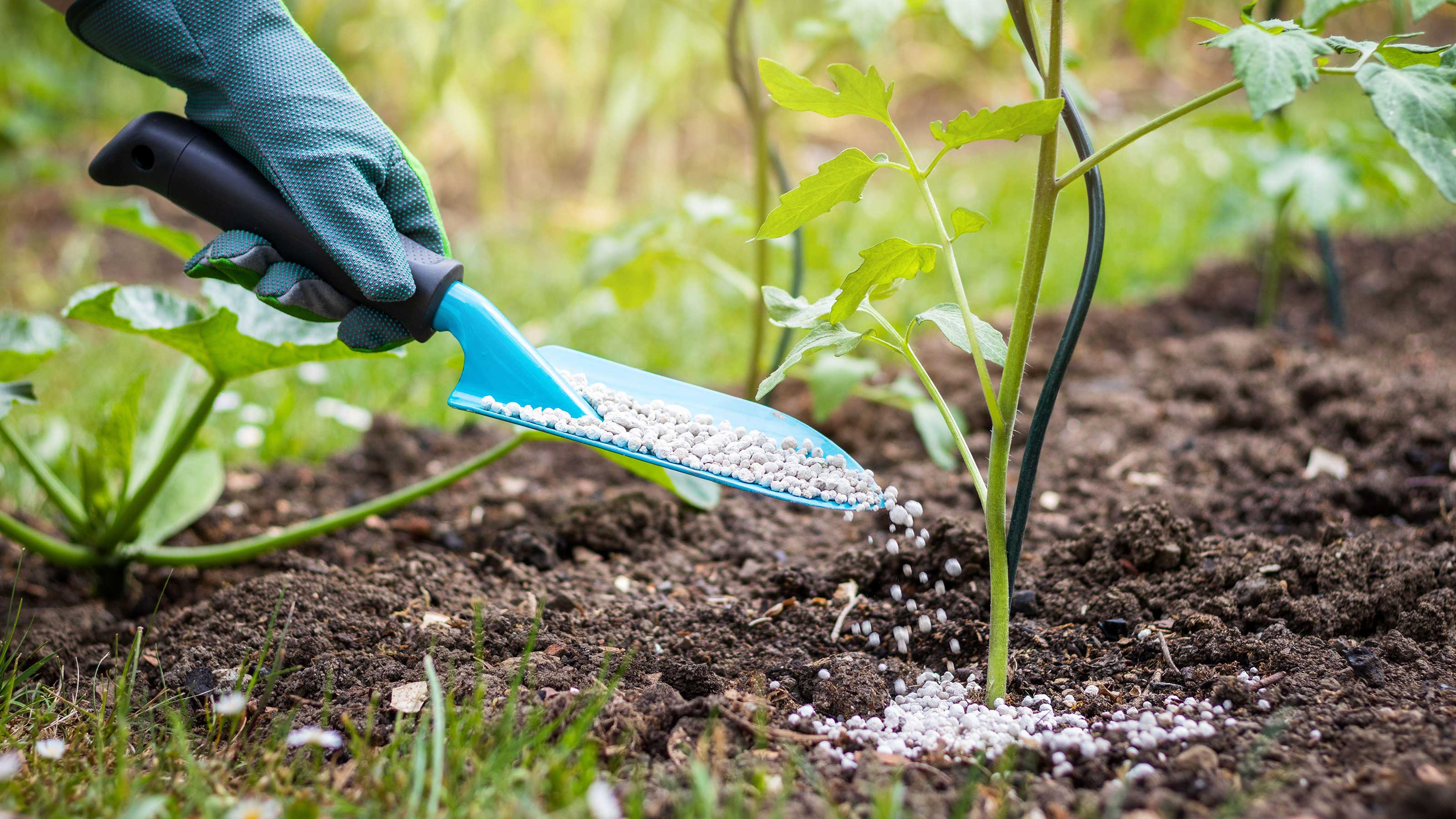
You've probably heard about fertilizing plants and the magic it can do, but do you know exactly how to do it? It can actually be a bit confusing – there are a few types of fertilizers, for starters, and various ways to apply them. What's more, different plants need slightly different approaches for the best results. But we're here to explain.
You can fertilize most things in your garden, from your lawn to your raised beds. But why should you bother? Well, doing so encourages growth, so will reward you with higher yields, showier blooms, or healthier, greener grass. This is because fertilizers give plants a concentrated dose of nutrients – at a much quicker rate than composting (although that's definitely still valuable too). There are three main nutrients that help out in different ways: nitrogen is great for leaves, phosphorous for roots and shoots, and potassium for flowers and fruit.
However, you can't just buy any old fertilizer and throw it over your borders with gleeful abandon. In fact, overdoing it can have detrimental effects (as is the case with most things), making your plants weak and vulnerable. So, to help you fertilize your plants the right way and get the results you're after, we've rounded up lots of handy tips and advice. It's easy once you know how.
A straightforward guide to fertilizing plants
From the different types of fertilizers to top tips on how to apply them, our useful info on fertilizing plants will help keep your garden looking glorious.
Different types of fertilizers
According to the RHS, there are two main types of fertilizers: organic and inorganic.
Organic ones come from plants or animals – think seaweed; Fish, Blood and Bone; bone meal; and nettle 'tea'. They are slightly slower at taking effect. As the RHS explains, this is because the organic molecules have to be broken down by the soil before the plants can use the nutrients within them.
Inorganic fertilizers include the likes of Miracle-Grow, Growmore and Sulphate of Ammonia. They consist of either synthetically-made nutrients or naturally-occurring mined minerals. They tend to be stronger and quicker to act than organic fertilizers.
Both organic and inorganic fertilizers can fall into four different types of products: compound, straight, controlled-release and slow-release.
- Compound fertilizers, as the name suggests, are made of a combination of different nutrients. The balance can differ according to the plants that they are designed for.
- Straight fertilizers include just one type of nutrient and are often used to address a particular deficiency.
- Controlled-released fertilizers are made from small granules which slowly release nutrients as they get wet. They are generally inorganic.
- Slow-release fertilizers degrade slowly due to micro-organisms in the soil. They tend to be organic.
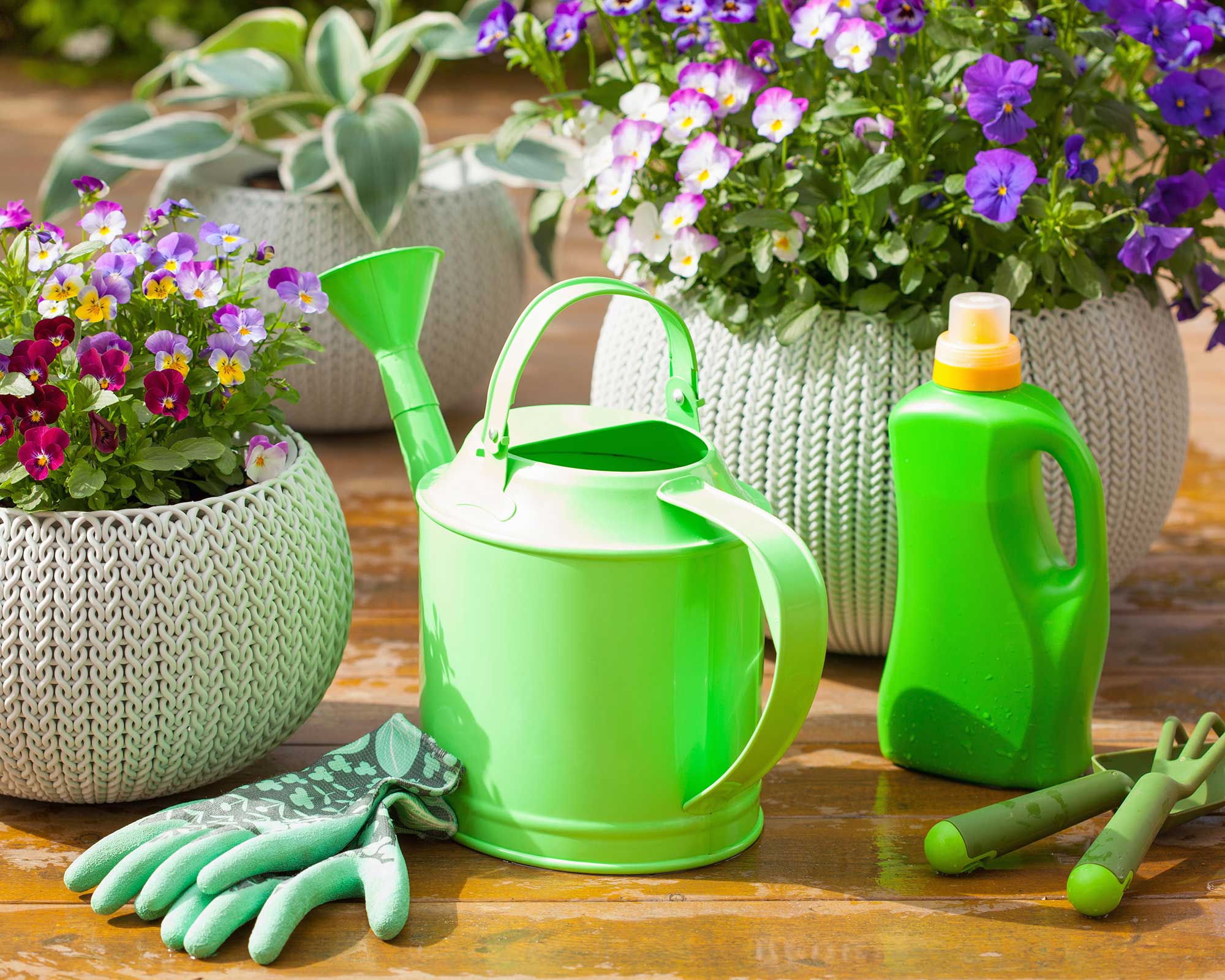
How to fertilize plants: the basics
There are a number of different methods when it comes to fertilizing plants, depending on the type of product you use and the type of plants you treat.
- Watering on is when granular, powder-based or liquid forms of fertilizer are dissolved or diluted with water and poured onto the roots of a plant. This is carried out when the plants are growing to give them a quick boost. Getting the mixture on the foliage can result in scorching, so should be avoided.
- Foliar feeding, on the other hand, is when some types of fertilizer are applied directly to the leaves of a plant, often to correct nutrient deficiencies. It's most effective when applied to young, tender leaves.
- Base dressing involves adding fertilizer to the soil mix before planting up or sowing seeds.
- Top dressing is when fertilizers are added to the top of the soil around plants at the start of the growing season. Too much, however, can lead to root damage.
It's important to remember that all fertilizers are different, as is the correct way to apply them. Always follow the packet instructions before proceeding to avoid damaging your plants.
- Looking for more ways to up your growing game? Our guide to the best compost bins will come in handy.

How do you fertilize perennial plants?
Perennials are the stalwarts of flowerbeds and pots, ranging from beautiful blooms to structural shrubs. Giving them a dose of fertilizer will ensure they put on a good yearly show.
'Fertilize twice a year: in spring and in late summer,' says the experts at Perennial Power. 'Spring fertilizing is the most important: it is the foundation. Fertilizing in March gives your perennials an extra growth boost.
'Fertilizing in late summer (July/August) is necessary to give the plants strength before entering the winter period,' they add.
The team also suggest to opt for organic fertilizer when it comes to perennials. 'Organic fertilizer has several advantages compared with chemical fertilizers. They allow plants to grow more gradually and improve the soil.'
Check the packaging for the correct dosage and application method. 'The fertilizer will allow them to grow and flower optimally and allow the soil to remain healthy and fertile. In this way, you can keep your perennials in top condition and enjoy them year after year.'
A good way to know if your perennials are getting sufficient nutrients is to check the leaves, they add. 'For example, smaller and lighter colored leaves indicate a nitrogen deficiency (N) and leaves that turn yellow between the veins indicate a lack of magnesium (Mg).' Knowing what your plants need more of can help you make the best choice when it comes to picking your fertilizer.
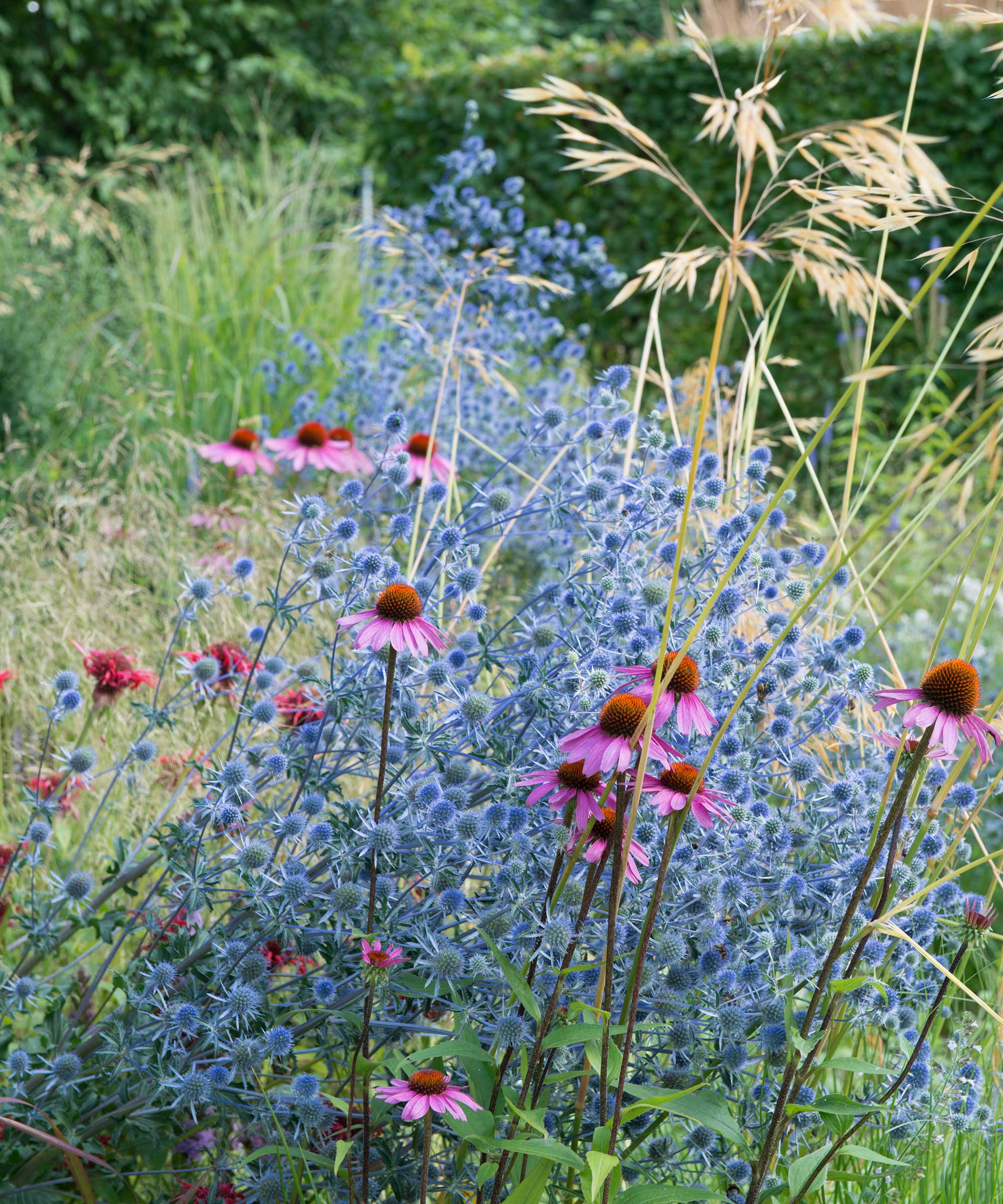
How do you fertilize roses?
One of the most well-loved perennials are roses, and an important part in learning how to grow roses is finding out how to fertilize them properly.
Fertilizing them not only helps them put on a beautiful display, but also makes them more resistant against pests and diseases. Do so in March or April. Repeat-flowering varieties can then be fertilized again in early July to encourage a second flush of blooms.
The team at David Austin Roses explain how there are two types of rose food – granular and foliar. 'Granular feeds are easy to apply as they are simply sprinkled over the soil,' they say. 'They slowly release nutrients over time which the rose absorbs through its roots.'
It only takes a few steps to apply granular fertilizer to roses:
- Start by clearing the soil of weeds and debris at the base of the plant.
- Sprinkle the granular fertilizer evenly around the base of the rose to the width of the canopy, measuring out the correct amount according to the label. Don't be tempted to overfeed, which can damage the plant.
- Mix the granules into the soil carefully, using a hand fork.
- Water the area if dry, then mulch. You can find lots of top tips on mulching in our guide.
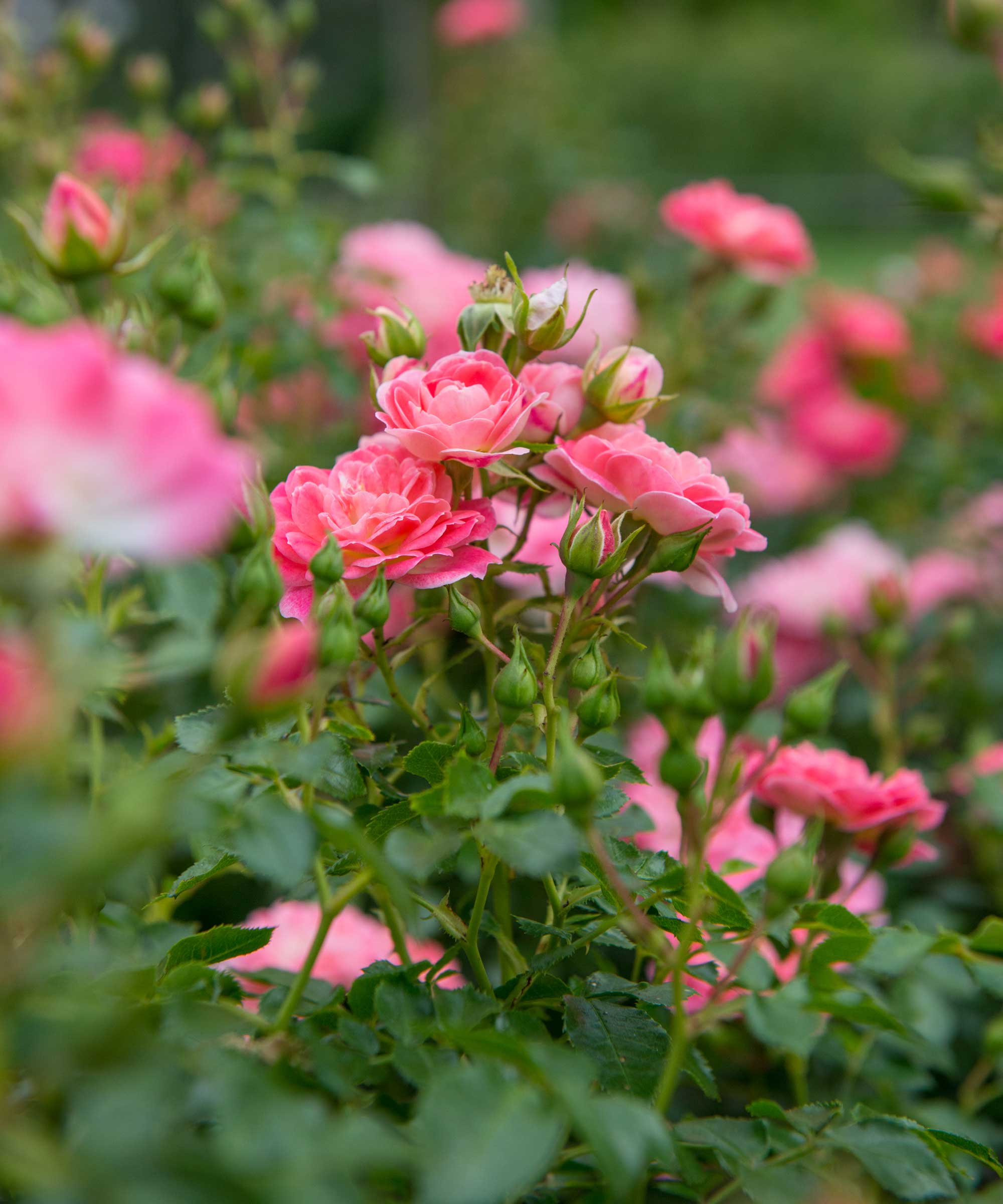
How do you fertilize lawns?
Fertilizing a lawn correctly will help keep it luscious, green, and healthy. Most people tend to feed their lawn twice a year: once in spring and once in autumn. You can also give your lawn a boost in mid-summer with a fast-acting fertilizer which will help maintain optimum color and resilience throughout the hottest months.
Different times of year call for different types of lawn fertilizer. 'For example, a high nitrogen feed is best applied in spring/summer to encourage growth,' explains Homebase, 'whereas a high potash feed is best applied in autumn to help strengthen the grass roots in time for winter.'
It's a good idea to mow your lawn a few days before you add the fertilizer. This will give it plenty of time to absorb the nutrients before you need to cut it again. It's also advised to avoid applying fertilizer on dry grass – making this mistake can lead to the turf scorching. Most products will also need watering in after application, although you could always pick a day where rain is forecasted to save you a job.
Use a spreader for ease of even application, and be sure to use the correct dosage. 'Applying fertilizer incorrectly can cause what was once healthy, green grass to turn yellow,' Homebase warns. 'If you have over-applied it, just water the area thoroughly to wash away any residual fertilizer into the soil.'
You can find more advice in our spring lawn care tips and autumn lawn care tips features.
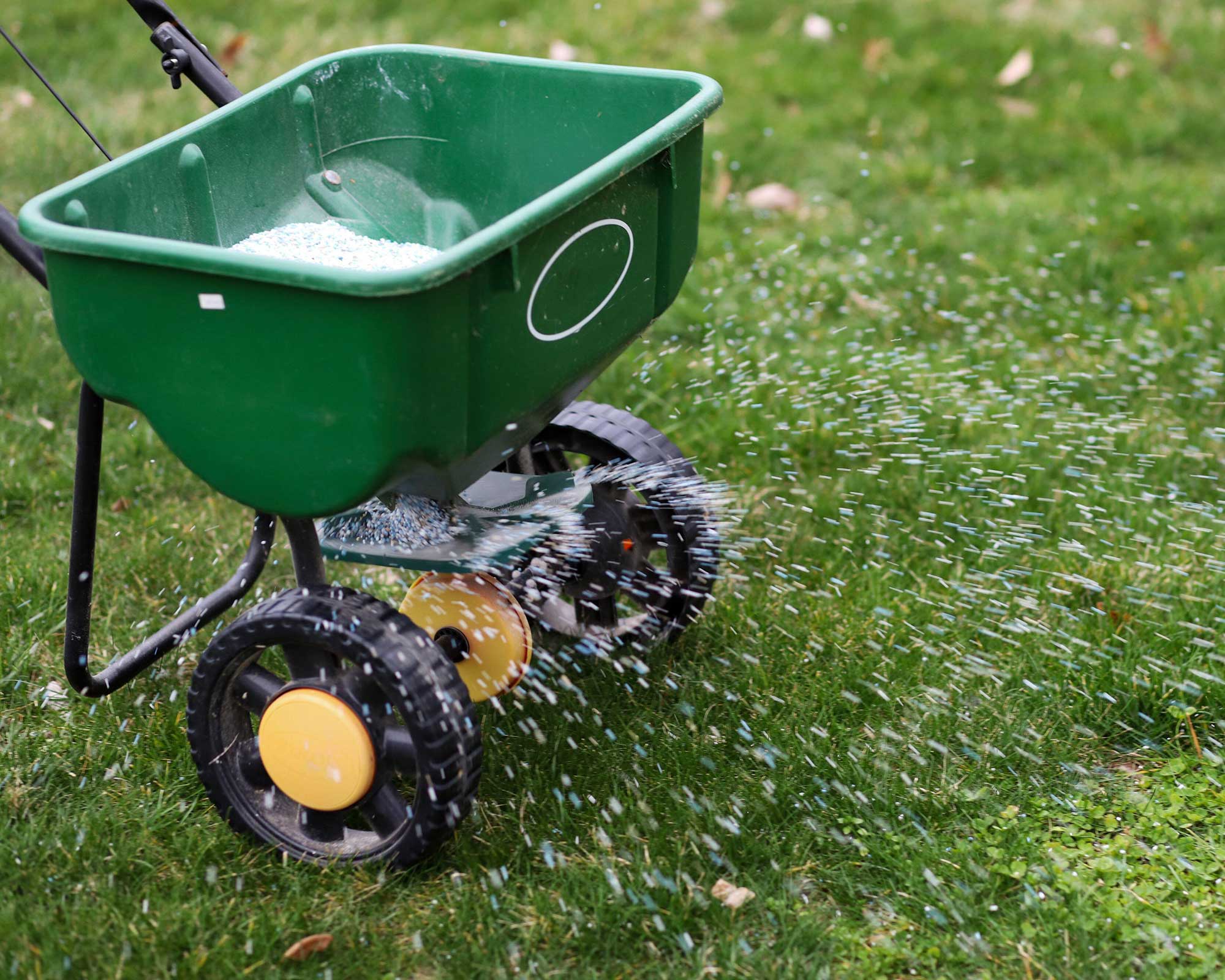
How do you fertilize trees?
Avoid fertilizing trees in their first growing season, as advises the RHS. This encourages the roots to grow out into the surrounding soil to search for nutrients and moisture, which in turn helps them establish a robust root system.
However, if your tree is planted in infertile soil, giving it a good dose of fertilizer the year after planting can be beneficial. The team suggest to use a balanced, general-purpose feed, and apply it over the entire root area at around 70g per square meter (2oz per square yard) in the spring.
Don't forget about watering too – a newly planted tree will need plenty, especially during dry periods, for at least a couple of years.
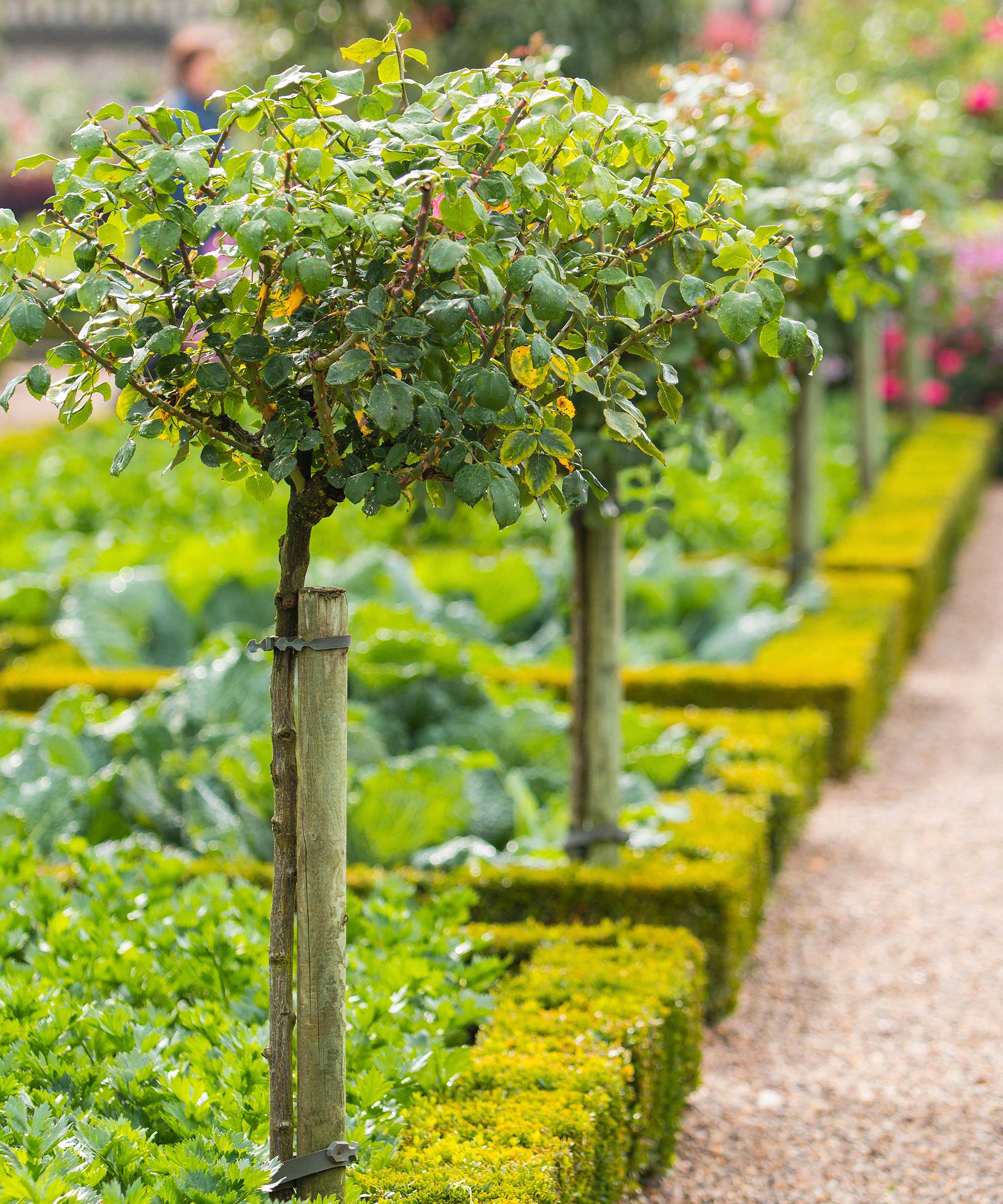
How do you fertilize vegetable and fruit crops?
Speaking of trees, there are plenty of fruit varieties available that make lovely additions to a garden. These generally benefit from fertilizing if you start application a year or so after planting. A good time to do so is in early spring – just make sure the soil is moist. If your fruit trees are growing in grass, the RHS suggests to remove a 1m (3¼ft) wide ring from around the base and fork over the soil before adding the feed.
Adding fertilizers to vegetable crops growing in your raised garden beds can also be worthwhile. Do so in early spring to get them off to a good start. Your crops will likely need a helping hand periodically as they grow, too: for this, use a fast-acting solution every few weeks.
Switch to a low-nitrogen fertilizer when tomatoes begin to produce flowers – this will encourage the plant to produce more blooms (and subsequently fruit) rather than leaves. Leafy vegetables, on the other hand, benefit from nitrogen-rich fertilizers such as Fish, Blood and Bone.
However, always remember that fertilizer should be used as a supplement, rather than a substitute for high-quality topsoil and compost. Need more composting info? Our guide to peat-free compost is well worth a look, whilst our tips on hot composting are ideal if you want to make your own, fast.

How do you make your own fertilizer?
Using DIY solutions for fertilizing plants is super rewarding and will save you some cash, too.
If you've recently started worm composting, you may already know how the liquor from a wormery can be used as a good general feed, as long as it is odor-free. Just remember to dilute the liquid with water to a rate of around 10:1 before using on your plants. Some gardeners advise to avoid using it on edible crops, however, as it can carry toxins.
Don't have a wormery? You can also make a fertilizer from nettles for a high-nitrogen feed, as suggests the RHS. Combine 1kg (2 lbs) with 10 liters (2 galleons) of water, leave for a fortnight, then dilute at a rate of 10:1 before using on your plants. Avoid using it on roses or tomatoes though – the iron levels are too strong.
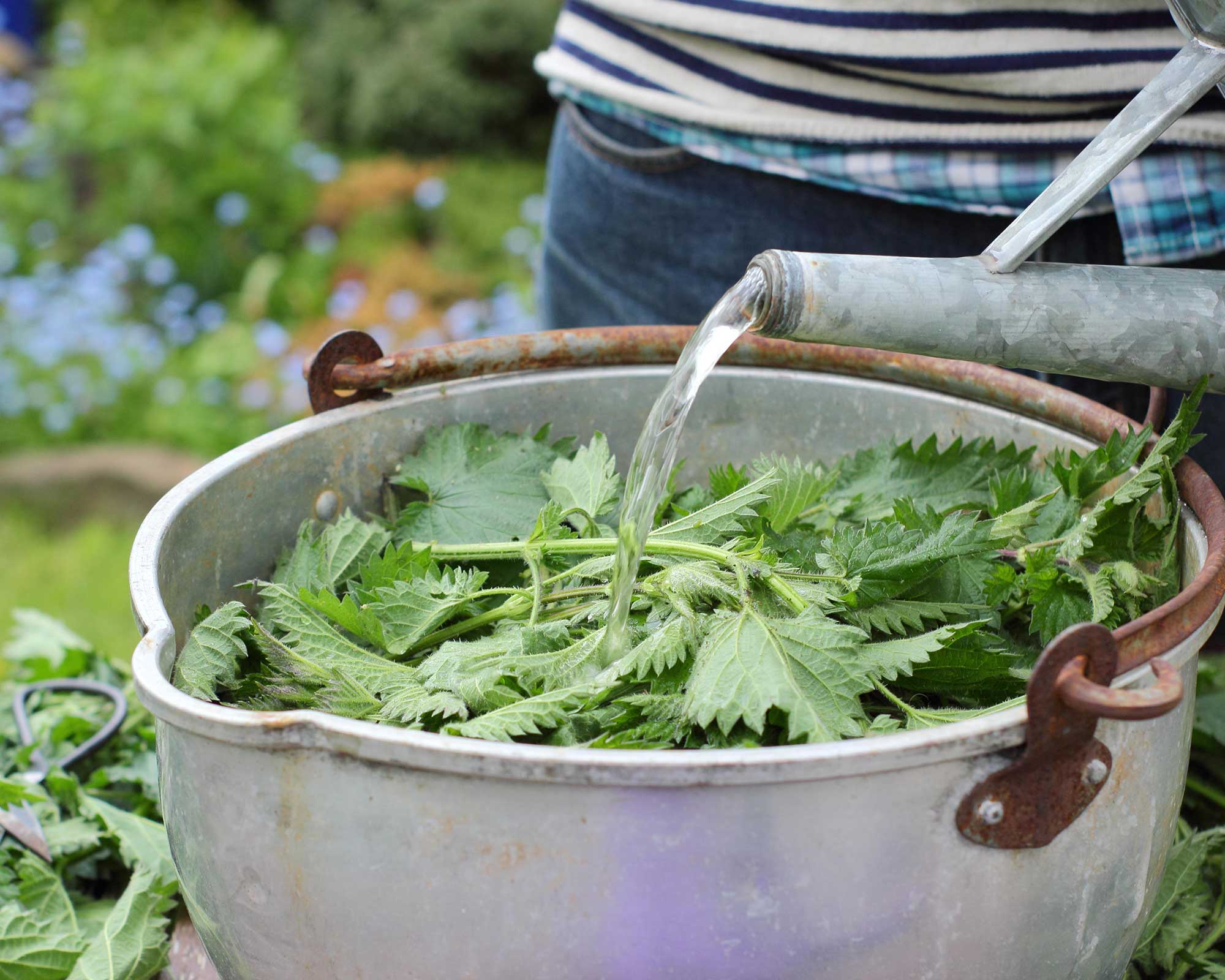

The garden was always a big part of Holly's life growing up, as was the surrounding New Forest where she lived. Her appreciation for the great outdoors has only grown since then. She's been an allotment keeper, a professional gardener, and a botanical illustrator – plants are her passion.
